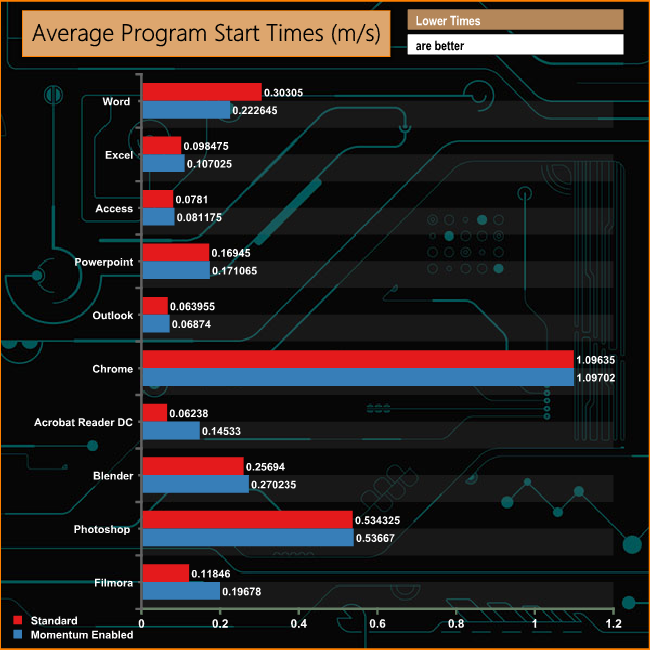The MX500 supports Crucial's Momentum Cache technology, which is accessed via the Storage Executive utility.
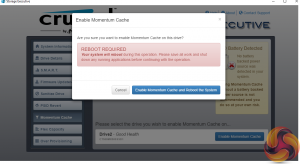
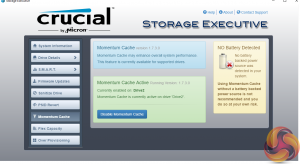
Crucial’s Momentum Cache technology is an intelligent software driver that dynamically leverages unused system memory to enhance burst performance and to overcome the fact that SSDs typically have better read performance that write. Momentum Cache will use up to 25% of available system memory, though no more than 4GB.
Whenever the OS needs to write data to the Crucial SSD, the data is actually written to the portion of the memory being used by the Momentum software instead, which is much quicker. Afterwards, the data is flushed to the SSD for permanent storage.
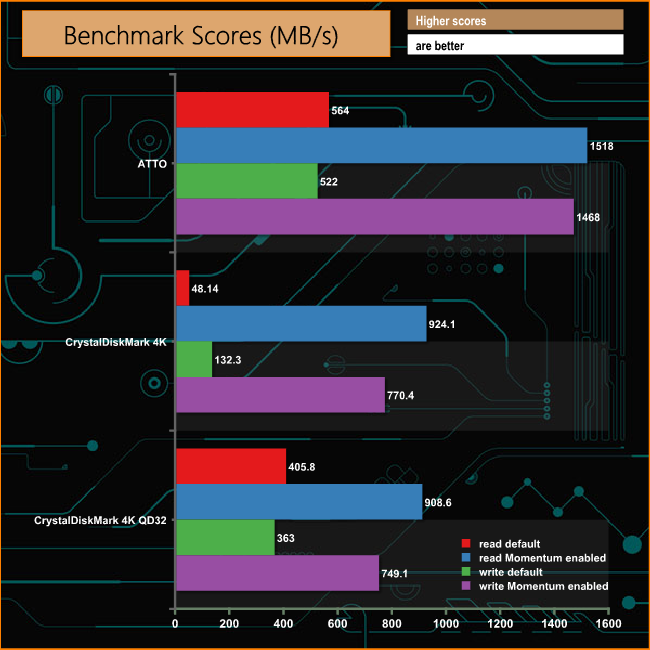
As you can see, turning on the Momentum Cache has a stunning effect on benchmark scores but not only writes, reads get a massive boost too, especially 4K reads. The Sequential read/write performance of the drive when the Momentum technology is applied is stunning with reads jumping from 564MB/s to 1,518MB/s and writes rocketing from 522MB/s to 1,468MB/s.
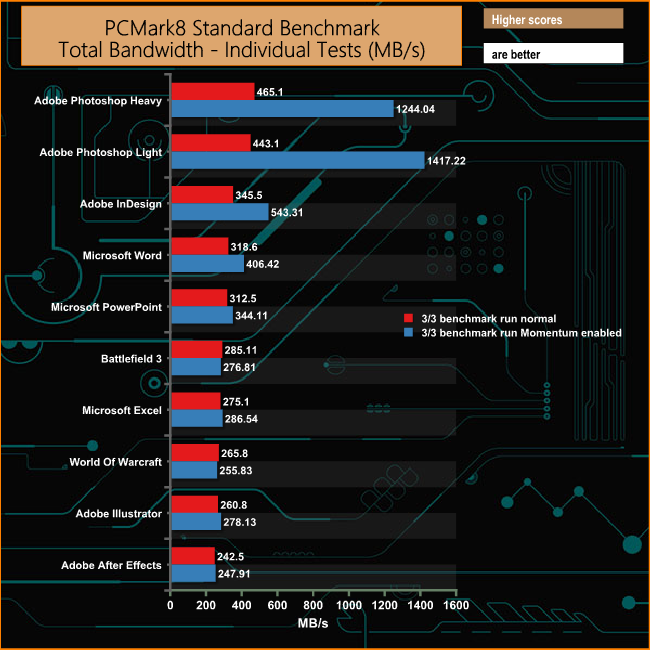
The only two tests in the third and final run of the standard PCM8 Storage Test to get a real boost from the technology are the two most demanding Adobe Photoshop ones. The bandwidth rockets from 443.10MB/s to 1,417.22MB/s in the Photoshop Light test and from 465.1MB/s up to 1,244.04MB/s for the Photoshop Heavy trace.
So the Momentum Cache gives benchmarks a real boost up to some impressive levels. But how about real life situations?
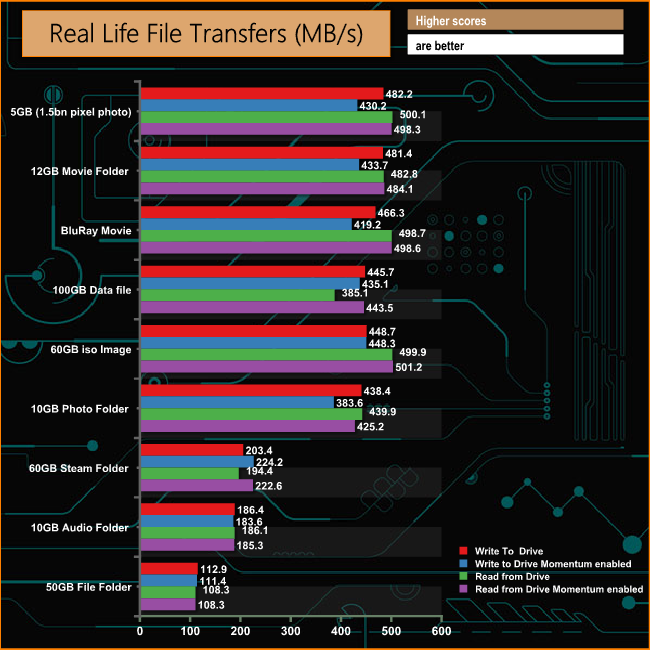
We used a variety of different applications and measured their load times to see if the Momentum Cache made any difference. The short answer is no. In fact, most were slower loading with the technology enabled, with the exception of Microsoft Word. But as we’re talking milliseconds, you won’t notice the difference.
It's much the same story with the real life file transfers, the Momentum technology making not much difference and in some cases actually making the transfer slower.
 KitGuru KitGuru.net – Tech News | Hardware News | Hardware Reviews | IOS | Mobile | Gaming | Graphics Cards
KitGuru KitGuru.net – Tech News | Hardware News | Hardware Reviews | IOS | Mobile | Gaming | Graphics Cards


